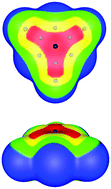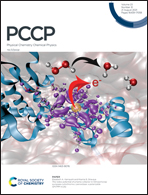The π-hole revisited
Abstract
It follows from the Schrödinger equation that the forces operating within molecules and molecular complexes are Coulombic, which necessarily entails both electrostatics and polarization. A common and important class of molecular complexes is due to π-holes. These are molecular regions of low electronic density that are perpendicular to planar portions of the molecular frameworks. π-Holes often have positive electrostatic potentials associated with them, which result in mutually polarizing attractive forces with negative sites such as lone pairs, π electrons or anions. In many molecules, π-holes correspond to a flattening of the electronic density surface but in benzene derivatives and in polyazines the π-holes are craters above and below the rings. The interaction energies of π-hole complexes can be expressed quite well in terms of regression relationships that account for both the electrostatics and the polarization. There is a marked gradation in the interaction energies, from quite weak (about −2 kcal mol−1) to relatively strong (about −40 kcal mol−1). Gradations are also evident in the ratios of the intermolecular separations to the sums of the respective van der Waals radii and in the gradual transition of the π-hole atoms from trigonal to quasi-tetrahedral configurations. These trends are consistent with the concept that chemical interactions form a continuum, from very weak to very strong.

- This article is part of the themed collections: 2021 PCCP HOT Articles and PCCP Perspectives


 Please wait while we load your content...
Please wait while we load your content...